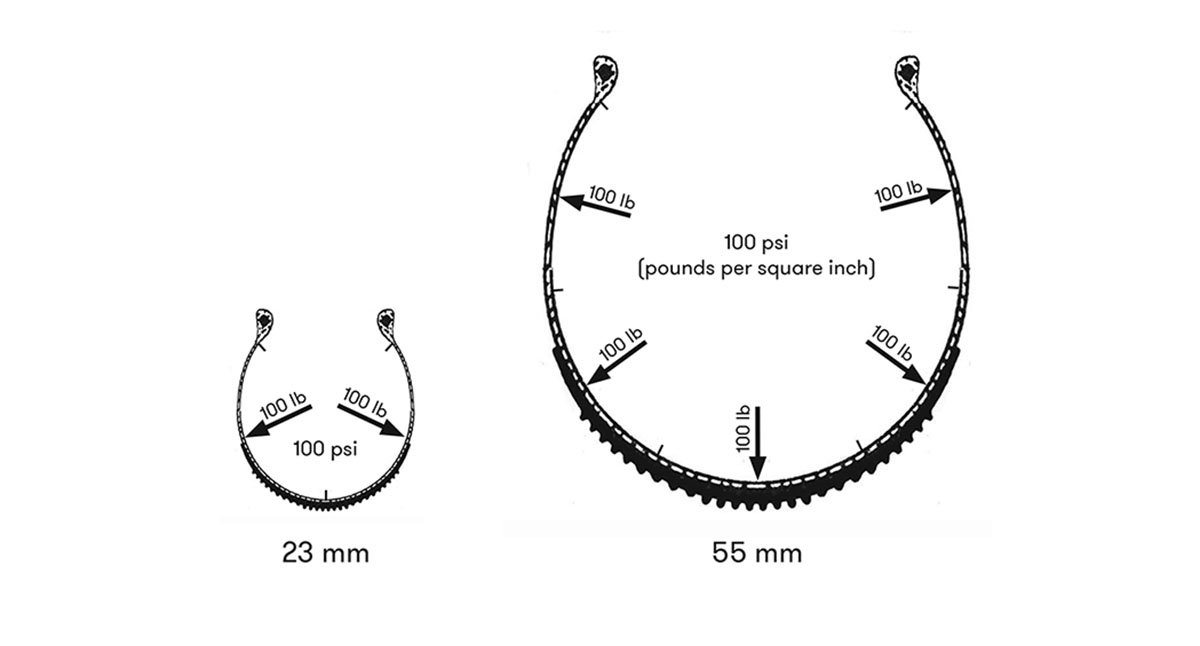The Wide-Tire Revolution in 6 Words
Tire design comes down to one essential rule:
Supple, wide, high pressure—pick two.
Why can’t we have all three? At high pressure, wide tires have to withstand extreme forces, so they need to be stronger (and thus less supple). Here is how this works: The tension on the casing is directly proportional to its radius.
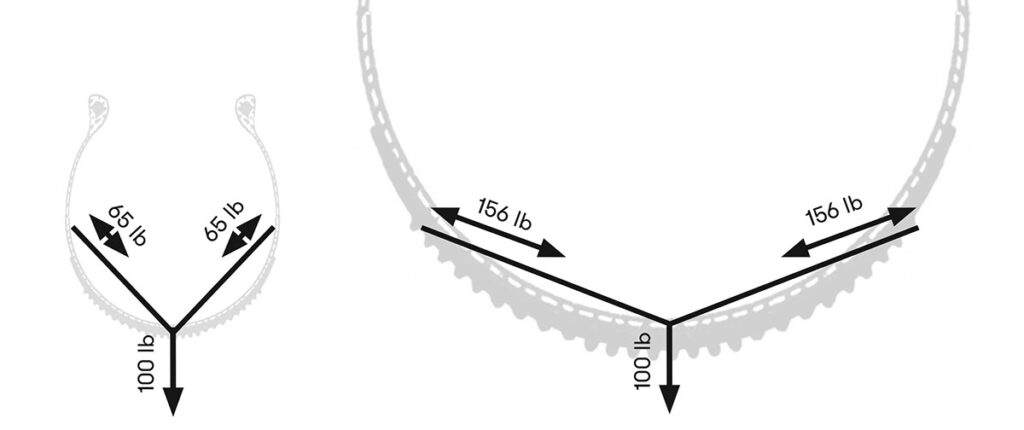
Imagine the tire casing as a rope, and the pressure as a weight hanging from it. If you want that rope to become straight, you need to pull much harder—and the rope needs to be much stronger. The same applies to a tire casing: If you want to make the tire radius larger (wider tire), the tire becomes less curved, and the tension on the casing goes up.
The radius of a 55 mm tire is 2.4 times larger than that of a 23 mm tire. That means the 55 mm casing must be 2.4 times as strong as the 23 mm casing to support the same pressure. A casing that strong will inevitably be stiff, harsh-riding and slow.
If you want to use a supple casing for a wide tire, you’ll have to reduce the maximum pressure. Extra-supple 23 mm high performance tires can be inflated to about 132 psi. If you use the same casing for a 55 mm tire, the pressure rating drops to 55 psi. (132 / 2.4 = 55) That means if you want to use a supple casing for a wide tire, you have to accept that it can’t run at high pressure.
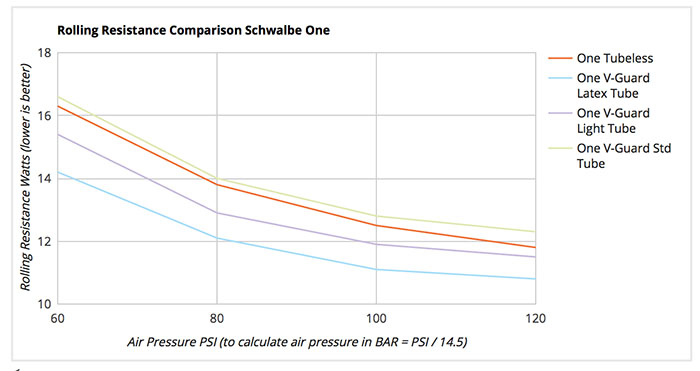
Before Bicycle Quarterly started testing tires, it was generally accepted that high pressures were essential for performance. Why? Because that’s what you see when you test on steel drums: Rolling resistance appears to go down as pressure increases. In the example above, you see that the rolling resistance decreases by 30% from 60 to 120 psi. Nobody wants 30% more resistance, so everybody was running the highest pressure possible back then. (Since then, we’ve found that steel drums don’t replicate the real world—more of that later.)
Back then, there were basically three types of road tires:
- narrow and supple racing tires, with high pressure ratings — FAST
- wide and stiff touring tires, with high pressure ratings — SLOW
- wide, stiff and cheap city bike tires with moderate pressure ratings — ULTRA-SLOW
You immediately notice that the only the narrow tires are fast. Speed isn’t everything, of course. When you’re looking for comfort, you’ll notice that the tires back then weren’t ideal for comfort, either. The racing tires were inflated too hard for comfort. The touring tires were too stiff for comfort. And the city tires were even stiffer, because they used thick threads in their casings.
Back then, nobody made wide and supple tires, because they would have moderate pressure ratings—which we thought increased rolling resistance by 30% or more. Based on what we believed back then, it would have been foolish to use expensive supple casings to make slow tires.
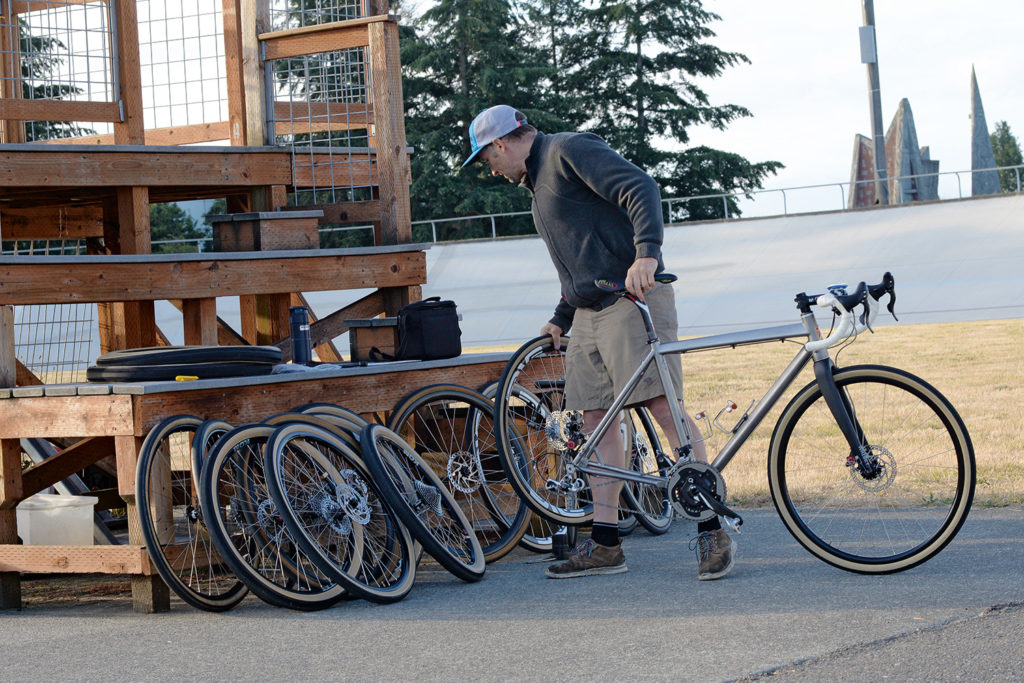
We started testing tires on real roads in 2006. From the beginning, we found that supple tires didn’t need high pressures to roll fast. They rolled just as well at lower pressures. We realized that the suspension losses, caused by vibrations, slow bike and rider down. Basically, vibrations aren’t just uncomfortable, they also slow us down. And since high pressures result in more vibrations, that cancels any advantages you get from less flexing of the tire itself.
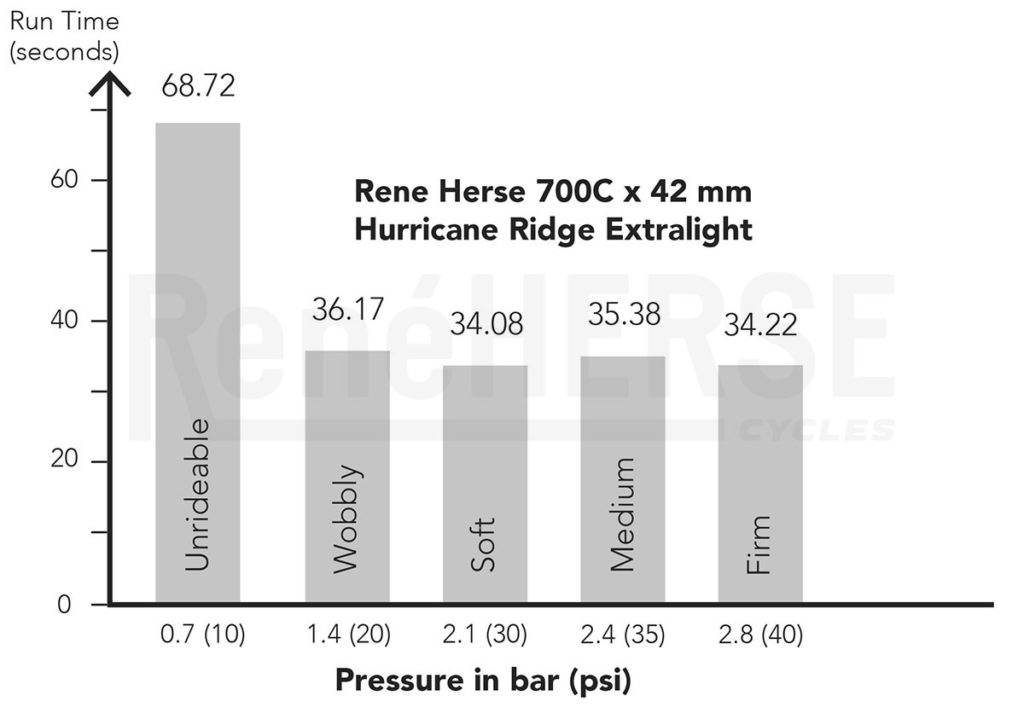
Above is a roll-down test with a 42 mm Rene Herse Extralight tire. At a low pressure of 30 psi, the tire is just as fast as it is at higher pressures. At 20 psi, the tire becomes wobbly, but it’s still not much slower. At 10 psi, the tire is unrideable—unless you coast very carefully, as we did in this test—and the tire gets significantly slower. In other words, the tire becomes unrideable roughly at the same time as it gets slower. Any pressure above that—any pressure where the tire is rideable—doesn’t really affect its speed. (The ‘Medium’ pressure of 35 psi is actually a little bit slower than both the ‘Firm’ and ‘Soft’ pressures, but that’s a topic for another post.)
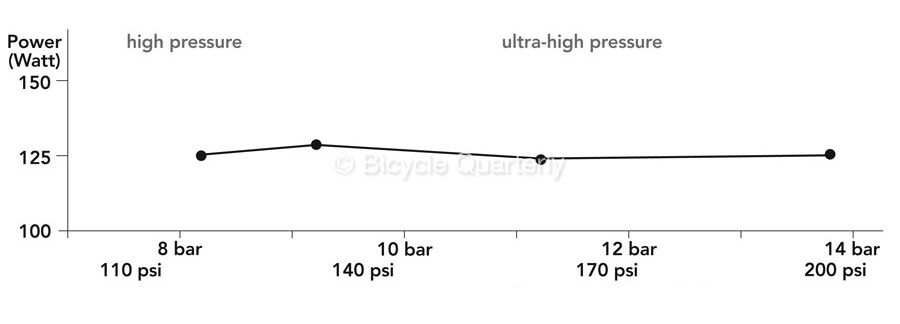
How about ultra-high pressures? We tested a 26 mm tire with Standard casing at very high pressures with a power meter. (Don’t do this at home, the tire isn’t rated for those pressures!) Even at 200 psi, the tire doesn’t roll faster than at 115 psi.
All these tests were done on smooth pavement under carefully controlled conditions, with multiple repeat runs. (The datapoints above show averages of multiple runs.) We did a rigorous statistical analysis to ensure we are really seeing differences between tires, and not just noise in the data.
Let’s go back to that essential rule of tire design: Supple, wide, high pressure. Pick two.
In the past, high pressure was deemed essential for performance. So tire makers picked high pressure first. Then they had to choose one of the other two: Supple or wide? For racing tires, they chose supple. They got racing tires that were narrow, supple and fast. For touring tires, they chose wide. As we’ve seen above, if you want a wide tire that can handle high pressures, you need to make it strong and stiff. Those touring tires were slow and harsh-riding. Even if you let out some air and ran the touring tires at lower pressures, the stiff casings still were slower and harsher than necessary.
Once we realized we don’t need high pressure, we could instead choose the other two variables: supple and wide. And thus we could create wide tires that are ultra-fast (and ultra-comfortable). This finding has changed tire design once and for all. It’s also changed the bikes we ride, as well as where and how we ride them. We don’t use the word ‘revolution’ lightly, but we think it’s justified here.
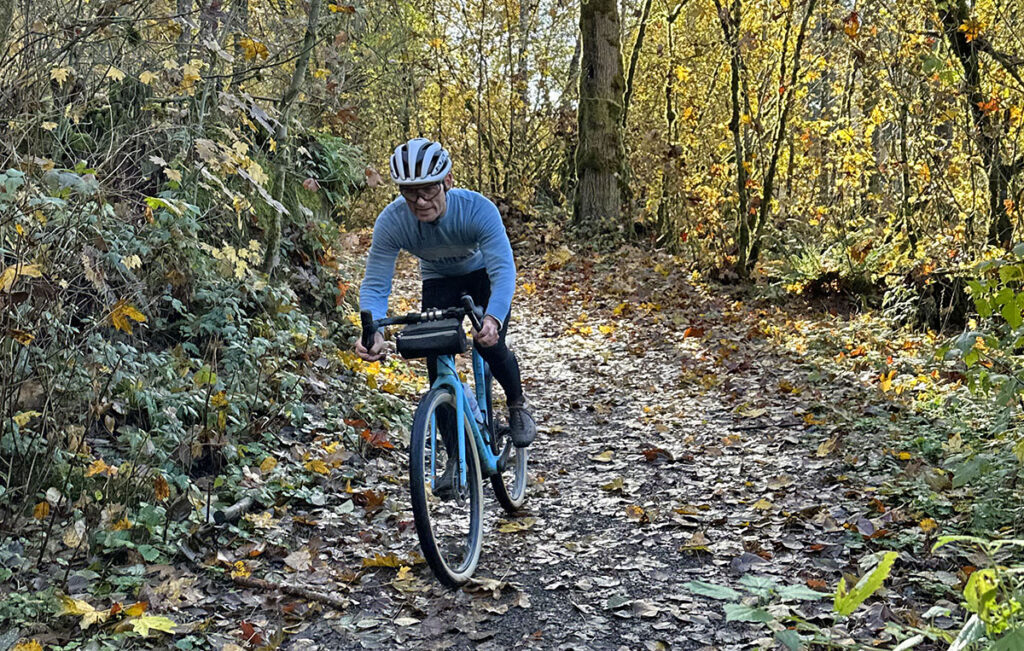
Since 2006, we’ve worked on wider, faster and more comfortable tires. It took a long time for the rest of the industry to take our research seriously, which means Rene Herse has a big head start when it comes to making supple tires that offer superior speed and comfort on any terrain, not just on smooth asphalt.
Further Reading:
- Timeline of the development of Rene Herse tires.
- To learn more about the research that has revolutionized bicycles in the last 15 years, check out our book The All-Road Bike Revolution.
Credit: Steel drum data (Schwalbe tire) from www.bicyclerollingresistance.com
11/17/2023: This post has been updated with a more accurate explanation of why wide, supple tires cannot run at high pressures.


